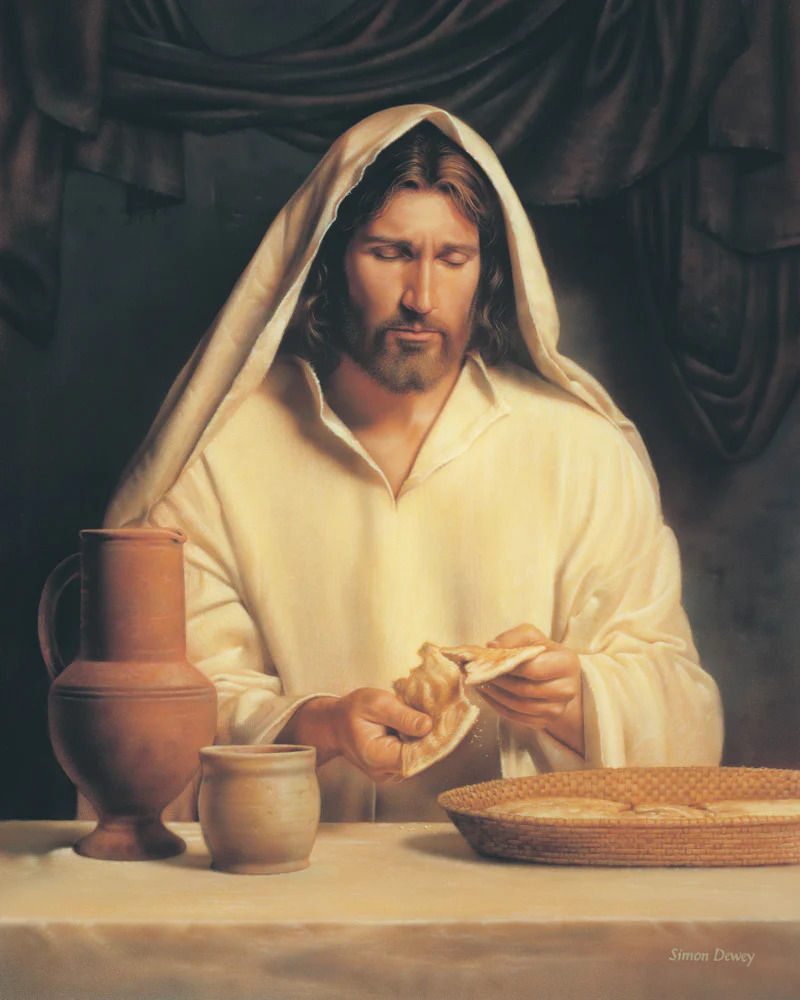TAKEN, BLESSED, BROKEN, GIVEN
- Charles
- 1 juin 2024
- 4 min de lecture
Reflections on the Solemnity of the Most Holy Body and Blood of Christ (Corpus Christi): Exodus 24:3-8, Hebrews 9:11-15, Mark 14:12-16, 22-26

Thrice in the gospels, “Jesus took the bread, blessed it, broke it, and gave it to his disciples”.
Firstly, near Bethsaida, close to the Sea of Galilee, “taking the five loaves and the two fish, he looked up to heaven and blessed and broke them and gave them to the disciples to set before the crowd” (Luke 9:16), eventually feeding five thousand men.
Secondly, when Jesus was eating his final Passover in the upper room in Jerusalem, Jesus “took bread, said the blessing, broke it, gave it to them” (Gospel).
Thirdly, wishing to open the eyes of the Emmaus disciples, “When he was at the table with them, he took bread, gave thanks, broke it and began to give it to them” (Luke 24:30).
On this Solemnity of Corpus Christi, these key moments teach us three precious lessons on eucharistic spirituality.
1. Eucharistic Hospitality:
Whom did Jesus feed on the shore of the Sea of Galilee? Who were these 5000 men and the uncounted women and children? Luke specifies that Jesus welcomed the crowds who needed healing, who wished to be cured, (9:11), who were hungry and thirsty for his word and food alike. He feeds a vast multitude in search of meaning, companionship, and wellness. The disciples seem bothered by these ‘needy crowds’ and so they ask Jesus to send the crowd away so they may search and find food for themselves (Lk 9:12). However, Jesus wants them to feed them himself and to teach his disciples the secret of Eucharistic hospitality. Becoming a Eucharistic person means welcoming those who are lost, sick, and hungry, the poor, the oppressed, and the destitute.
This Eucharistic hospitality produces unimaginable results: “all ate and were filled, and the leftovers were gathered up in twelve baskets” (Lk 9:17). Are our Eucharistic celebrations truly welcoming and hospitable? Do the ‘needy crowds’ of our day, the sick, the lost, the depressed, and the hungry find a place at our tables? Can the Eucharist, in some way, bring all of us together: the divorced and the remarried, those of other religions, and the many others whom we traditionally label as those ‘living in sin’ or ‘not in the state of grace’? Do we, like the disciples, still want to “send them away” or do we like Jesus, “welcome them and break bread with them”? Eucharist invites us to practice courageous hospitality.
2. Eucharistic Sacrifice:
Jesus takes, blesses, breaks, and gives the bread again when he celebrates his final Passover with his disciples on the eve of his passion and death. The crowds have now dispersed. Those he cured, fed, liberated, and comforted are now busy with their lives. What lies ahead of Jesus is a difficult path and he is understandably in distress. “And being in anguish, he prayed more earnestly, and his sweat was like drops of blood falling to the ground” (Luke 22:44). In this difficult moment, Jesus longs to break bread with his disciples as he tells them, “I have eagerly desired to eat this Passover with you before I suffer” (Luke 22:15).
Every Eucharistic celebration is a participation in Jesus’ ardent desire for communion with his beloved disciples. Every ‘Holy Mass’ that we celebrate is a renewal or re-enactment of the passion, death, and resurrection that is made present for us today. So when Jesus insisted “Do this in memory of me”, Jesus did not mean a theatrical representation or a memorial of a lost loved one. He instead, asks us to perpetuate his redeeming passion in our bodies, vocation, families, and Church. Eucharistic sacrifice is not just something Jesus did; it is something that we, as his disciples, do.
3. Eucharistic Journey: Cleophas and the other disciple, who during their formative years, walked with Jesus through Galilee, Judea, and Jerusalem now continue their walk with Jesus on their road to Emmaus. Being a disciple means to be part of a community on the move, which we call the Church. The Emmaus journey has three stages:
Stage 1: Two troubled disciples engage in a ‘march’. Understandably dejected after their master had recently been tortured and subjected to a humiliating death in public, they are probably returning to their old lives. Jesus takes the initiative to approach them and walk with them. He begins to explain the scriptures and their hearts warm up to his presence and his Word.
Stage 2. They request him to stay with them and as Jesus takes, blesses, breaks, and gives the bread, “their eyes are opened and they recognize him”.
Stage 3: The Eucharistic experience guides the disciples to the Church’s mission. Refreshed and transformed, the disciples leave back to Jerusalem, find their fellow disciples, and witness their transforming experience, “It is true! The Lord has risen and has appeared to Simon” (Luke 24:34).
This Eucharistic journey continues in our personal and community lives when our eyes are opened and we recognise the Lord in the bread blessed, broken, and shared. Let this feast help us grow in the Eucharistic spirituality of hospitality, service, and discipleship journey.




Commentaires